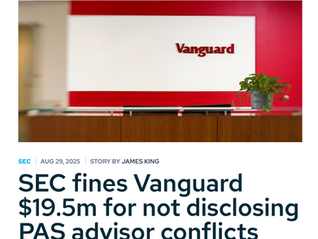- Rubin Miller, CFA

- Dec 31, 2024
- 3 min read
Happy New Year, everyone!
3 ideas that can improve our lives as people and investors...
Accept that you are a pea-brained human. You need systems.
We are too frequently our own worst enemy because our wiring is so infrequently designed to do the work necessary to be successful.
As the bombardment of New Year's Resolutions takeover, remember that hardly anyone sticks to them. A resolution is not a system. Being on your phone less, joining a gym, or wanting to save more money — these are useless actions and desires. We are not wired to fulfill stuff we want; we need systems to fulfill stuff we want.
Phone goes in a drawer. Accountability buddy for the gym (who you pay $20 every time you miss). Automate money from paycheck to investment accounts.
Resolutions are worthless. You are unlikely to change anything about your habits if you don't have a system.
Mindfulness isn't enough. Start being hopeful.
There is nothing wrong with being aware and present, but life isn't always pleasant. The mindfulness paradox is that when things are bleak, too much focus on the present state is suffocating. Start believing things will get better.
As 2024 ends with the stock market close to all-time highs, nearly every equity investor who has owned a globally diversified, low cost market portfolio — is wealthier than before. But that means she's continued to hold this portfolio through ongoing global wars, inflation worries, and a nauseating, polarized political landscape. It's not always easy to be hopeful.
But market prices are forward-looking, and frequently reflect a better future than we feel as investors. As all of us inevitably face some personal hurdles in 2025, we are best-equipped if we are hopeful of a better future, too.
There is nothing wrong with being mindful, but it isn't enough. According to researchers, when you are faced with issues like a health crisis or unemployment/financial challenges, it's HOPE (not mindfulness) that is the most powerful coping mechanism.
What happened is not what had to happen.
The S&P 500 just finished its best two-year streak in a quarter century, and has continued to trounce other assets like international stocks and small caps.

Accordingly, many people will wish they had more money in the S&P 500 — and some will unfortunately now chase these returns (even though they already happened, silly). If you want to be a successful investor, or you want to be a well-calibrated human, accept the outsized impact sheer randomness has on many of our outcomes.
There is nothing reliable to take away from the fact that the S&P 500 had a monstrous couple years. It just happened. But it didn't have to happen. And no one could have known about this return ahead of time.
The reason that empirical work studying stocks is done over multi-decade periods is to cut out the noise, and to find statistical significance in any extrapolations. Academics don't care about two-year periods because they don't tell us anything reliable about the next two-year period.
Through time, markets have deep drawdowns — like 2000-2002, 2008-09, and March, 2020 —that upend everything for good reasons: a tech bust, a banking crisis, a pandemic. These were not known ahead of time, and they happened but they did not have to happen.
You are best off owning a portfolio, and living your life, in a way that can withstand adversity without depending on it, that expects the future to be unknowable at the present, and doesn't suffer from resulting, which is looking at what actually occurred and believing it says anything useful about the quality of your previous decisions (sometimes it does, sometimes it doesn't).
If you invest properly, or treat people the right way, or are just generally kind and share your bread with your neighbors, you will still occasionally have bad outcomes.
That's how life works, and getting comfortable interacting with the unknown, and embracing sometimes-disappointing results that are its function (rather than beating yourself up), is an unlock to a better year.
I wish you great health, friendships, family, and investment excellence in 2025!
Yours,
Rubin
End.








